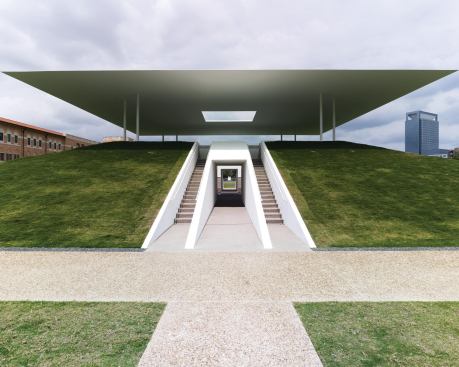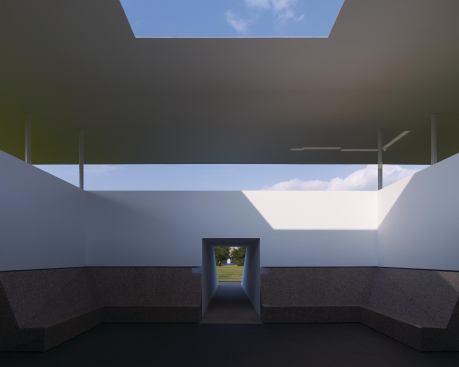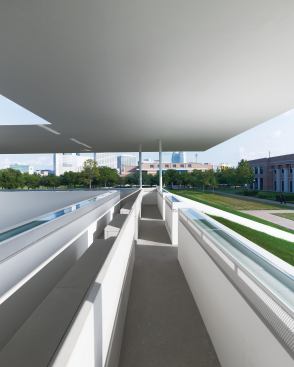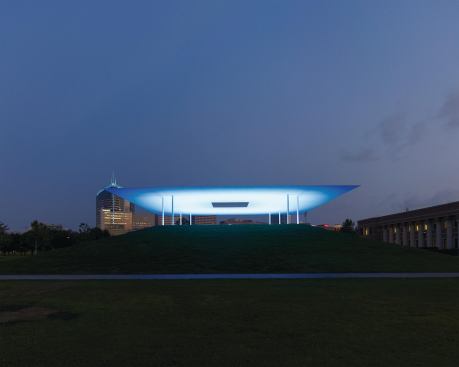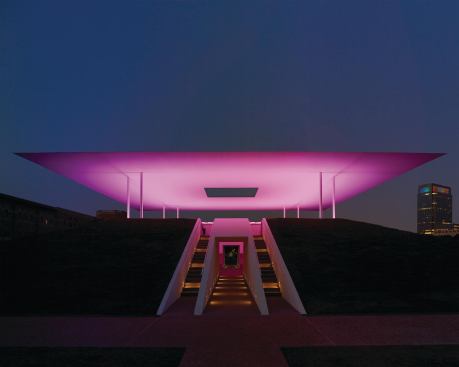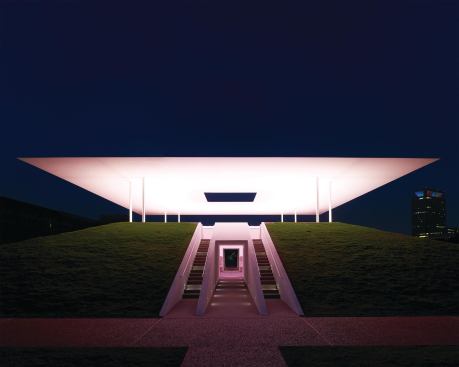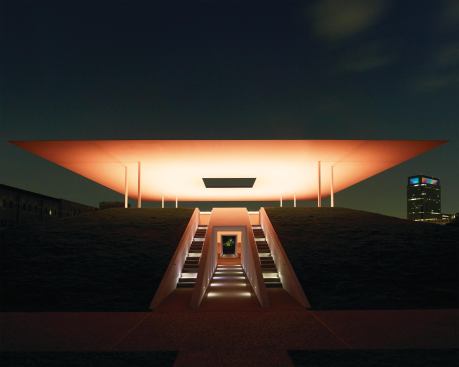Ian Allen
Turrell’s enclosure can be entered by two aligned portals that…
Turrell’s enclosure can be entered by two aligned portals that recall the similar incision-into-hillside detail at the Tomb of Agamemnon in Mycenae—by way of Philip Johnson’s reinterpretation of that ancient archetype for his semi-subterranean art gallery in New Canaan, Conn. Turrell’s portals are flanked by narrow staircases leading to the parapet-level seating, their framing walls as well as a broad, lintel-like panel all rendered in the same clean white stucco as the atrium interior and canopy underside. The result is rigorous. But it is also—for an artifact that, through its skylight, wrestles to ground an infinite axis mundi between heaven and earth—exceedingly well mannered.
Some architectural observers might like to see all those cosmic forces wrapped up a little less neatly. The tidy combination of tasteful white-walled modernism and structural bravura recalls Berthold Lubetkin’s 1934 Penguin House for the London Zoo—and like that magnificent folly, Turrell’s structure has a strident profile, a presence that sometimes risks the object becoming a monument to the visual experience for which it is merely the means.
And yet, at dusk and dawn, such contentions fade. Perhaps the structure’s most brilliant gesture is in deploying that vanishingly fine edge around not only its central skylight, but also around the canopy’s outside circumference. By meeting the outer world exactly as it meets the world within, the artwork stages a generous and startling inversion of public and private, sacred and profane, high and low. It’s a turning-inside-out that, all along that razor’s edge, somehow turns all the sky into a skylight, somehow shelters its entire expanse—enlisting and transforming, to its furthest horizon, all of that low-lying landscape into high-flying art.
